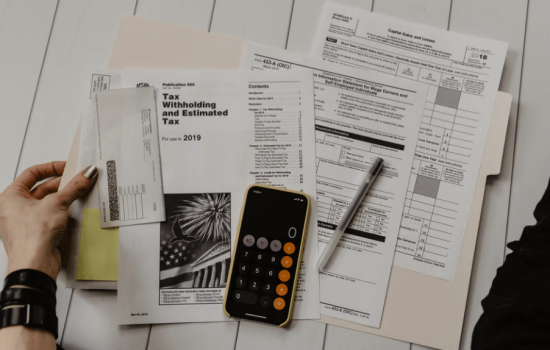Codes of numbers and letters are used to determine the income tax that a person owes the government. This code is used by your employer or pension provider to subtract your taxes and calculate how much tax-free income you get.
HMRC will then apply your tax-free Personal Allowance to your wages and calculate the tax you haven’t paid on them and the amount of any work benefits (thus answering the question ‘how much tax do I pay?’). What remains of your profits are yours to retain.
If you have the incorrect HMRC tax codes, your profits will not compute correctly. In other words, you’re either paying more than you should or will be hit with a bill you don’t want. It all emphasizes the need of having tax codes clarified.
So answer the question, “What do perform tax codes mean” we have offered a complete examination of everyone and how they affect you. Find the list of tax codes and what they mean in UK in this guide.
UK tax codes – What exactly is a tax code?

Your tax code determines and specifies how much tax credit is taken from your paycheck before sending it to you. Numbers and letters are used to make up the tax code.
The figures represent your ‘personal allowance,’ or how much you may make each year without paying taxes. Unless you earn more than your allowance, you are exempt from paying income tax.
The letter specifies your specific situation, which influences how much you may make before paying taxes.
Explaining numbers and tax codes

The digits in UK tax codes correspond to the tax-free income you get that tax year. Typically, you multiply the tax code number by ten to determine the entire amount of income you may make before taxes – for example, if your tax code is 1257L, you can earn £12,570 before taxes.
One of the most popular tax codes in 2022 is 1257L. However, this varies depending on the tax-free income (for example, the most common code in 2021 was 1250L). It is mainly employed for those who only have one employment and no untaxed income, unpaid taxes, or taxable perks (like a company car).
Tax Codes List
Once you’ve discovered your tax code on your payslip, you must understand what it implies. Each tax code letter has a distinct meaning, and not everyone will have 1185L. Thus here is a list of UK tax codes with brief explanations:
1. The BR tax code
The abbreviation BR refers to the basic rate tax code. This job’s earnings are taxed at a rate of 20%. It is common if you have more than one employment or pension.
2. D0 is the tax code
To account for your many sources of income, you must pay a higher tax rate of 40% on all of your earnings from these sources.
3. D1 is the tax code
All earnings from this work are taxed at a rate of 45 percent. It is also often the result of having more than one employment or pension.
4. The K tax code
K in your tax code indicates that deductions for the previous year’s corporate perks, pension, or tax usually are required, and this amount is more significant than your limit.
5. The L tax code
The usual tax-free personal allowance is available to you (see below).
6. The M tax code
You got a 10% transfer of your partner’s Allowance (Read how tax affects marriage allowance).
7. N code of taxation
You have given 10% of your allowance to your partner.
8. The NT tax code
It implies you won’t have to pay taxes on this money.
9. OT is the tax code
Your allowance has been depleted, or you have started new employment, and your employer lacks the information required to issue you a new tax code.
-
The US tax code
It implies that your income or pension is taxed at Scottish rates.
-
The T tax code
When additional computations are employed to calculate your allowance, this is utilized. As an example, if your yearly salary exceeds £100,000, your budget may be lowered.
Tax codes that are not cumulative
W1 and M1 are the two non-cumulative tax codes. These are abbreviations for week one and month one. These are added to your tax code to indicate that the tax is computed on the current tax period (paid weekly or monthly) rather than the whole year, making it non-cumulative.
How do tax codes work?

The figures on your tax code are calculated by adding any untaxed income and the amount of any job-related perks (e.g. a company car). The payment you haven’t paid tax on gets deducted from your allowance.
What’s left is the amount of tax-free income you may earn in a given tax year. This figure is multiplied by ten. Employers, pension providers, and other financial institutions will be informed by the accompanying letters of the amount of tax-free income to which they are entitled to the tax year in question.
How to modify the tax code?
You must notify HMRC promptly if you suspect your tax code is inaccurate so that you don’t pay too much tax.
Conclusion
For example, the tax code 1257L consists of a number and a letter. Calculations show how much tax-free money and tax relief you should get each year from your employer or payroll provider.
Because of this, the Personal Allowance in the above example would be £12,570 instead of £12,570. Depending on the letter in your tax code, you may be entitled to the regular tax-free Personal Allowance, or you may have received a 10% transfer of your partner’s Allowance, for example.
It is crucial to maintain a close check on your tax code to reflect your current financial circumstances accurately. It is easy to check your tax code; you can find it on payslips, P60, or even P45 documents.
You may also verify your tax code on HMRC’s website. In the above guide, we have explained every basic to advance thing related to list of tax codes and what they mean in UK. We hope it helps.







